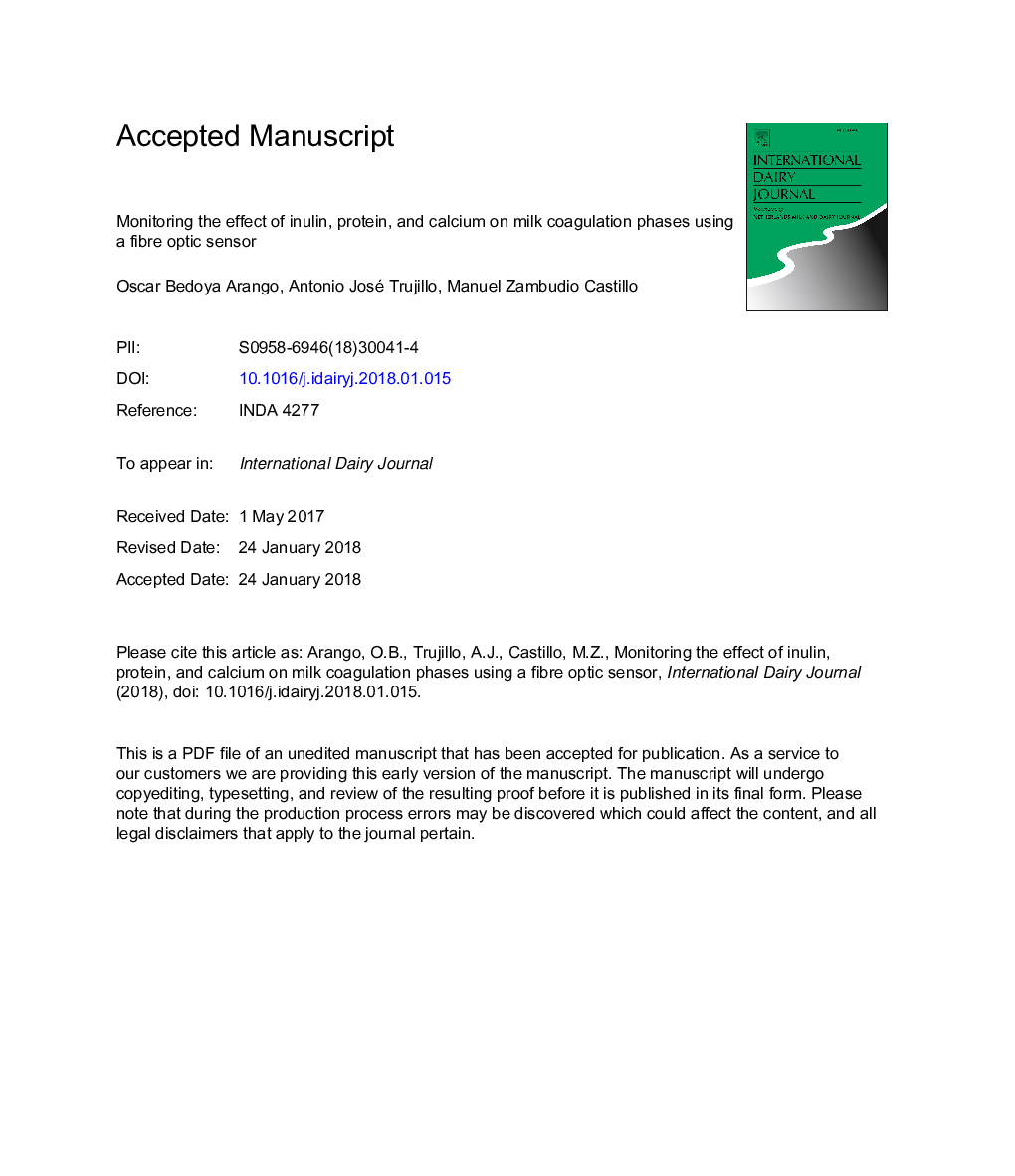| Article ID | Journal | Published Year | Pages | File Type |
|---|---|---|---|---|
| 8499830 | International Dairy Journal | 2018 | 31 Pages |
Abstract
Currently, there are evident contradictions in the literature about how milk protein concentration and added calcium affect the hydrolysis and aggregation phases during milk coagulation. In this study, a near infrared light backscatter sensor and rheology were used to evaluate the effects of protein (3, 4, and 5%), calcium (0.90 and 1.80 mm), inulin (2, 5 and 8%) concentrations and their interactions on the hydrolysis, aggregation and firming phases during enzymatic coagulation of low fat milk. The increase in both inulin and calcium concentration reduced the duration of the hydrolysis, aggregation and firming phases. The increase in protein concentration reduced the hydrolysis reaction rate, but produced a significant decrease in the aggregation and cutting times. The results demonstrated that the optical sensor is sensitive enough for the inline detection of the effect of variation in milk composition or ingredients addition on each of the coagulation phases.
Related Topics
Life Sciences
Agricultural and Biological Sciences
Food Science
Authors
Oscar Arango, Antonio José Trujillo, Manuel Castillo,
